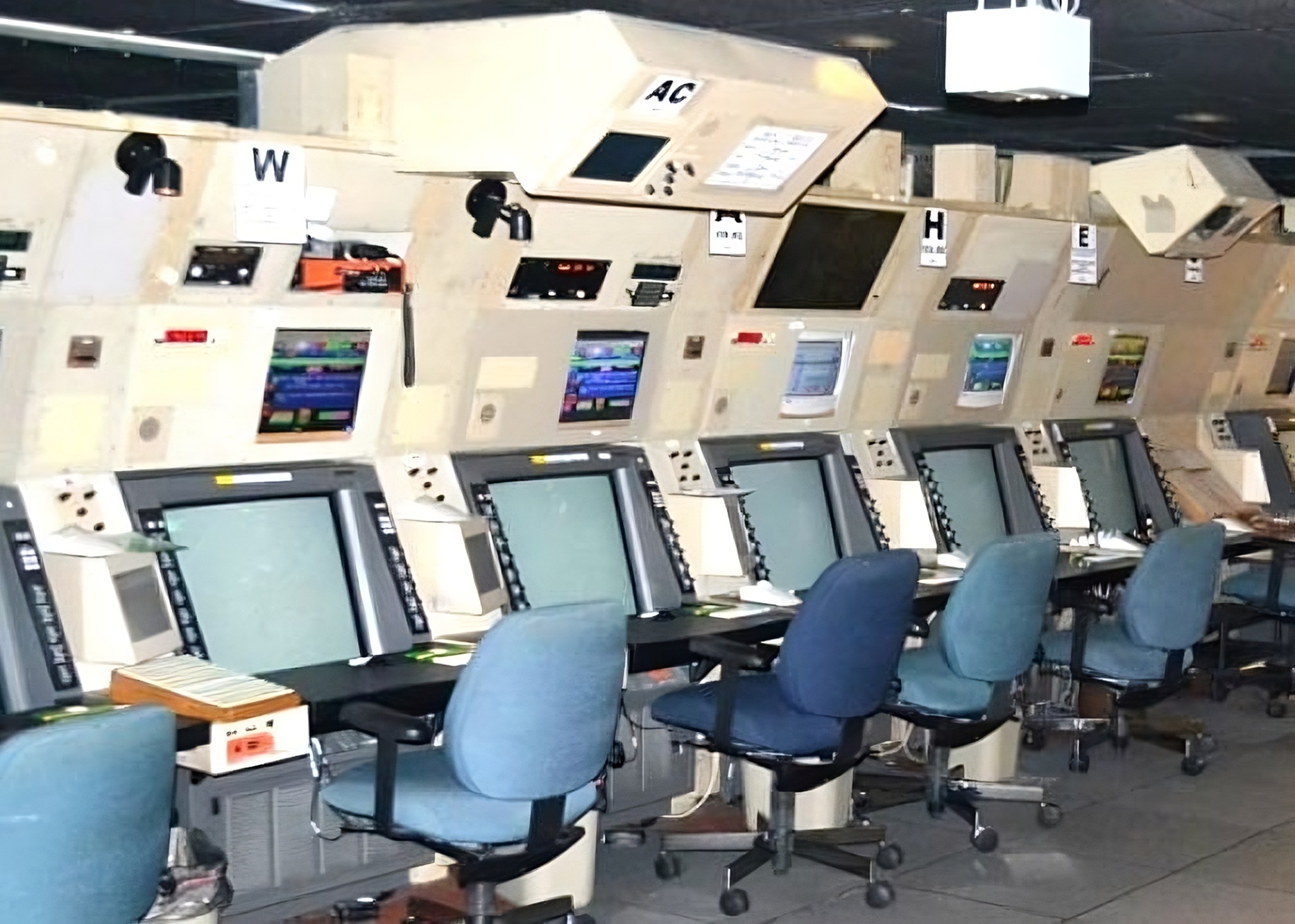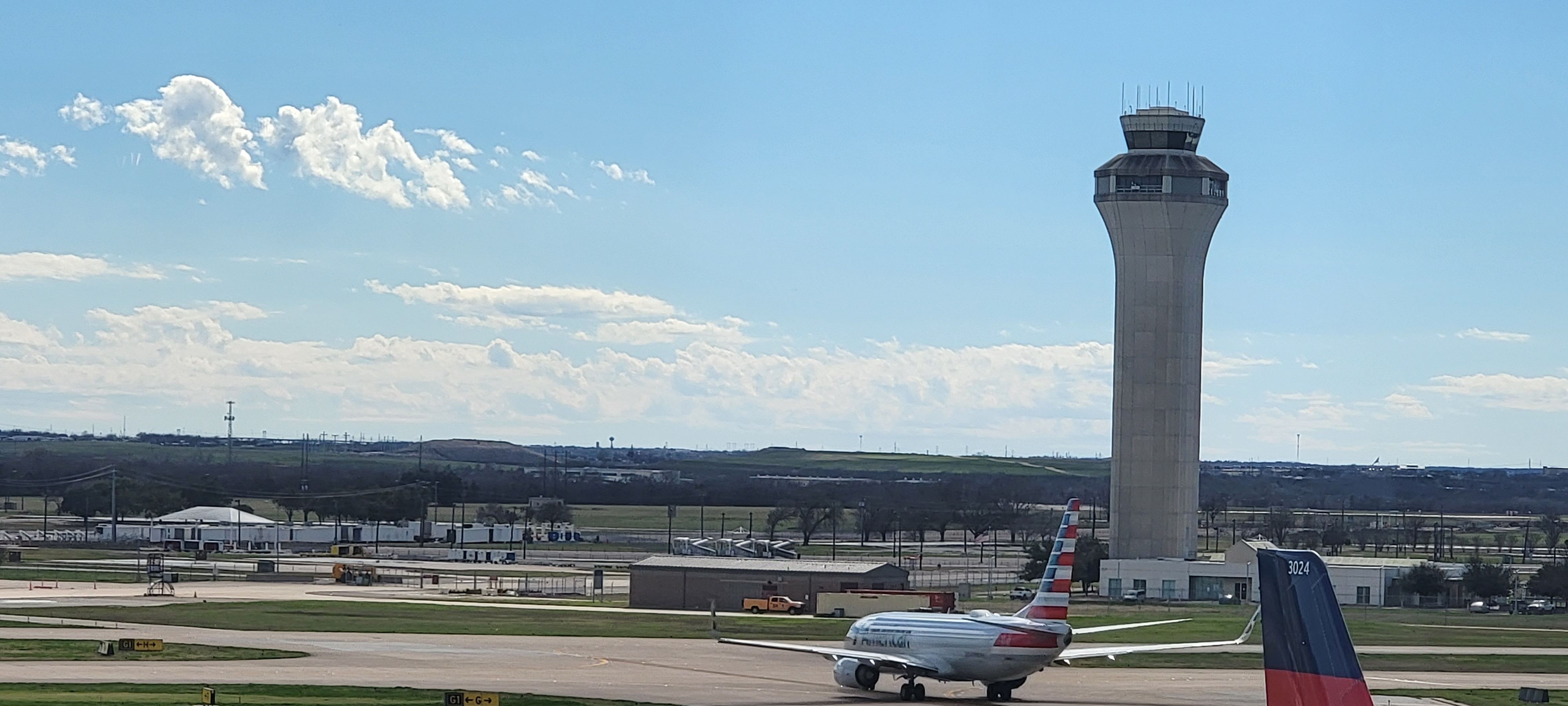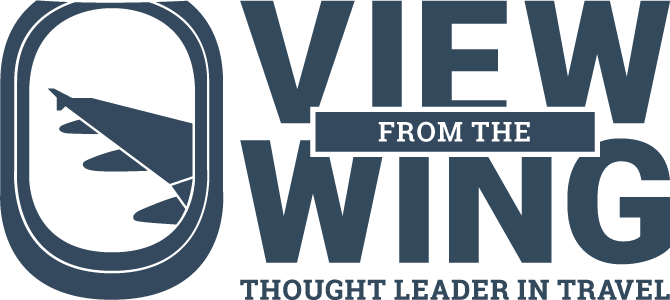Marc Scribner and Ginger Evans have a new report on remote air traffic control towers, looking at why the U.S. won’t adopt them even as they’re being used successfully around the world.
Remote towers would help a lot with the air traffic control shortage. They’re in use around the world, Congress has told the FAA to start using them, but the agency’s intransigence has blocked efforts for years.
These are facilities where controllers are not physically on-site at the airport. They use high-definition cameras, sensors, and communication links to transmit a real-time 360° view of the airport environment to controllers sitting at a n air traffic control center in another location.
They have multiple panoramic screens and integrated displays that replace the out-the-window view, augmented by tools like radar feeds, night-vision cameras, and object tracking that enhance a controller’s situational awareness. Operations are basically the same.

Norway’s Bodø Remote Tower Centre
Digital visuals can improve what controllers see, especially in low-light or bad weather. The remote tower center can also serve as a backup if a tower is evacuated or out of service (if Newark controllers walk off the job!).
Physical proximity no longer matters. Controllers don’t have to sit at the airfield, they can work in whatever metro areas make sense. They don’t have to be deployed to low-volume airports, either.
Sweden launched the world’s first remote tower at Örnsköldsvik Airport in 2015 and has built centers in Sundsvall and Stockholm that control eight airports. Norway operates 11 airports from a single center at Bodø. A single controller will handle multiple low volume airports from that center.
London City Airport has been managed by a remote tower since 2021, with controllers located at NATS’s Swanwick center. Singapore’s Changi Airport has been developing a digital tower concept, and Dubai’s Al Maktoum International (DWC) is planning remote tower capabilities. Nav Canada is working on a digital tower system for Kingston Airport. There are at least 41 remote towers in operation or in advanced development across 11 countries, and 10 remote tower centers that each manage multiple airports. The U.S. has none even though the FAA pioneered the research for them.
The FAA spent $73 million on a 157-foot tower at Teterboro, NJ (completed earlier this year) and $94 million on a new 370-foot tower in Charlotte in 2022. Replacement towers cost tens of millions. But a full remote tower setup can run $3–4 million.
Congress noted this in the recent FAA reauthorization, finding that remote towers significantly reduce per-airport expenses and can help more small airports afford tower services. Why pour $17 million into a 115-foot concrete tower (the FAA estimate for Kissimmee, Florida) when you can get the same digital capability at a fraction of the cost – with safer operations and easier staffing?
- Each staffed tower requires a dedicated crew of controllers and supervisors, even if the airport only sees a handful of flights at off-peak hours.
- Remote towers centralize personnel, allowing smarter scheduling and multitasking. Instead of three separate single-controller towers each needing their own supervisor and support, you can have one management team overseeing multiple operations from one site. Controllers at a remote center can cover for each other more easily, reducing downtime from breaks or absences.
For late-night shifts, where safety rules require at least two controllers on duty even at sleepy airports, a central facility can meet that redundancy without having two people sitting idle per tower all over the map.
- And they can be located in a lower cost of living area, or a more desirable place to live, making recruiting easier.
Many smaller U.S. airports today simply lack control towers entirely, meaning pilots are on their own to sequence landings. That limits the utility of those airports. Remote towers make it possible to give these airports tower services, bringing the safety and commercial benefits of controlled airspace to places that could never afford, say, $100 million.

Remote towers mean more airports can get ATC coverage, for less cost, with better technology and more flexible staffing. That’s why the world is moving this direction.
However, the FAA has been slow, and even obstructive. The FAA basically ignored remote towers, with two state projects launching the concept. Leesburg, Virginia was a successful pilot, performing flawlessly for four years, but the FAA pulled the plug in 2023 anyway. That’s meant a downgrade in safety and capacity for the growing aviation community there.
At the time of final certification, FAA Tech Ops treated the system as if it were a brand new aircraft design, even demanding a “reverse engineering” of the already-working system to justify its safety. And they demanded that the vendor pick up the entire remote tower system and install it at the FAA’s Technical Center in Atlantic City for testing. Saab withdrew from the project under these conditions, costs and timeline.
Air traffic control has been run one way for decades, and any deviation (that could upend staffing assignments and procurement projects) gets killed. What industry can get away with ignoring proven safety technology that can save money and improve service like this? The FAA can because they are their own regulator. FAA lethargy and turf battles killed a safety technology that Europe is advancing far more aggressively.

Last year’s FAA Reauthorization bill, though, included bipartisan language requiring the FAA to reate a clearly defined process for system design and operational approval of remote/digital towers, and publish milestones for testing and deployment and requires the FAA to assess the safety benefits of a remote tower against no tower at all. It also directs FAA to allow remote tower testing at multiple field locations rather than requiring setup in Atlantic City and shouldn’t scrap or duplicate prior testing completed in Leesburg and Fort Collins, Colorado.
There’s something to rethinking how air traffic control works entirely in a digital world. But if we’re realistic, and can only expect incremental improvement, surely this is one we can accomplish?


Nice article, thanks, Gary. Guessing there’s a better shot that this will be considered by the FAA moving forward.
If there are remote towers, the remote tower can be in Bangalore, India or Linfen, Shanxi, China. Wages in India could be a high paying job, $10/day. Or, if the market will bare it, $6/day.
Too bad DOGE was focused on subverting payment systems and terrorizing government departments to meet ideological objectives.
Implementing remote towers would actually improve government efficiency.
(While also moving federal employees from union-friendly blue metro areas to MAGAland).
“Too bad DOGE was focused on subverting payment systems and terrorizing government departments to meet ideological objectives.”
Amen…I’m living through it myself.
@derek – Boy can I see how this plays out:
1. Gov’t starts doing it. Builds tech and hires workforce.
2. Agency gets gaslight as all govt agencies in the US do these days.
3. Congress decides to privatize. Two or three primary competitors sell themselves to airports at rock bottom prices which the airports and passengers love because keeps prices down.
4. Rock bottom prices achieved by outsourcing the ATC command centers to Manila or Hi Chi Minh City or some 16 year-olds bedroom who thinks he’s just playing an online game.
5. Politicians get vapors, clutch pearls and decry the loss of American jobs.
Sounds familiar?
It would be nice if both the Left and the Right could recognize the need for spending taxpayer dollars judiciously instead of pandering to their respective political constituents.
It’s time for Congress and Trump to put criminal penalties in legislation to encourage FAA bureaucrats and air controller union activists to do what Congress and Trump order them to do with regard to aviation safety. Of course, a simpler approach is to simply follow in Canada’s footsteps with regard to aviation safety, but the problem is that Trump may not like that because Canada flat out (and rightly so) refuses to become the 51st state!
The NATS’s Swanwick center is less than 100 miles from London City Airport. The airport is still recovering from Covid-19 reductions in usage. It is a good trial to see if remote air traffic control systems work. I expect AI to take over before the remote systems are moved to other countries with AI costing less than labor in other countries. AI onshore remote systems are probably less vulnerable to hacking than offshore manned remote systems and would be better for national security.
Remote towers are a great idea and can really help at lower volume airports. The idea has merit.
Please understand most overseas airspaces strictly regulate an even flow of traffic. The US gave up on that idea in 1981 due to airline pressure to deregulate. Today’s flow controllers facilitate the airline hubs as a result. Eurocontrol still tightly regulates their system to set up a steady manageable flow to avoid controller overload.
Overall, more controllers are still needed in the US with a training overhaul being the key element. More manning is needed to give controllers more staffing flexibility.
Yes, AI will help in the future and controllers will merely observe for system issues.
We’re no where near that yet.
Foreign countries don’t have the amount of VFR traffic we do. That’s why everyone comes here to train.
Most people discussing ATC don’t really understand the system. They think it is mostly about traffic management & have only a minimal concept about what safety actually means.
Simple answer – safety is what people do when Captain Sully loses both engines due to geese ingestion.
Computers are useful tools but an AI just rehashes what someone else did somewhere else. Some ATCS’ are better than others. One of the characteristics that makes an ATCS particularly good is when they can quickly assess a unique set of circumstances & develop a plan of action that produces a desirable outcome. Computers & AI are not especially good with unique or paradox, qualities that are easier to find in a human.
Regarding remote towers. The technology has potential but with all such things, the devil is in the details. Look at what happened to Boeing. Accountants are important but they shouldn’t be running an organization where public safety is important. (think exploding Pintos).
Same for “privatization.” No other airspace handles the GA that operates in the USA. There is a good chance that privatization will kill GA. According to the NBAA, that’s a $339 billion sector of the economy, not to mention that a great many commercial pilots learned vis-a-vis GA training.
The only towers that are slow enough to benefit from this sort of thing are contract towers not staffed by the FAA.
Too late to the party, but the “problems” of today are not local control (towers) on the field that control the last five or ten miles. These are sweet jobs and most GA towers don’t even have radar.
The stressful jobs are approach/departure controllers who don’t even sit on the field (except PHX) and are many miles away. This is where all the magic and risk is.
The majority of comments coming from non-controllers. You would still need the same amount of controllers if they were at the airport or in a remote facility. The majority of airports they are talking about in the article close at certain times of the night with an overlying aproach control or a center taking control so this would actually add needed controllers if staffing goes to 24 hours. I find it funny that people with no idea of ATC are making silly assumptions and supposed ground breaking ideas that will probably never work.
I worked in FAA air traffic control for nearly 40 years. I was also the second Terminal ATC rep from FAA headquarters assigned to the Leesburg (SAAB) project. This author and the people commenting have no idea what’s involved with providing sir traffic control service. Remote towers, given their current level of technology and capability will only work at small, low traffic-density airports. (Like the airports in Europe mentioned here. One of those airports, is so slow. The log only about five take off and landing operations per day.) Any comparison to Newark or any other large place like that, is ridiculous.
The real issue is folks that have never been a cpc are making decisions for us and junk articles like this just prove that most don’t fully understand the atc system.
The EWR CPC’s didn’t walk off the job, additionally the staffing shortage is with the radar controllers who work the EWR sector from Philly. So your remote tower idea is a bust there.
Having remote towers Co located in the same building is a great idea but it wouldn’t help with staffing. CPC’s are specialists in their respective airspace and airports. If one remote tower is short a body they just can’t grab Steve that works COS and plug him in to work APA. So womp womp that point is out.
PHX is not the only airport that the tower and TRACON are co-located. It’s called an Up/Down and the faa has quite a few. Pit / phl / sat / las / har just to name a handful. Smaller up/downs are great for newer controllers to cut their teeth and get both tower and radar experience before going to a busier facility where you don’t have time to learn the basics, you need to learn how to work the volume of traffic.
You want to fix atc, put one of us in charge. And by one of us I mean someone that has worked traffic the last 15 years. Not some manager ladder climber that has dodged working traffic the last 15 years.
The countries that have allowed remote towers have far less every day flight operations than the USA
Additionally not all non-commercial (private aircraft) are equipped to support this type of.control.
Yes it needs to be tested here.
Installing all the ground equipment to support this is mega expensive
And if the cameras go down ?
The vast majority of controllers sit in a windowless, darkened, radar room. That radar room is already remote at some sites, and even if it’s somewhere on airport grounds it may as well be remote.
This debate is being driven by ignorance.
Remote towers wouldn’t work as well in the US we are simply busier than Europe across the board. Our GA community is massive. Splitting my attention between 2 airports so you can save a buck reduces safety. It will not be safer than with people on site. Even at so called “sleepy airports “
Bunch of non-controllers weighing in on an article written by, you guessed it, someone who isn’t a controller! This works overseas because they don’t have the traffic workload the US does. All of our towered airports see significant IFR and VFR traffic. We have issues getting ADSB to work properly with some of these older aircraft and it’s not even a requirement in a lot of airspace. Our National Airspace System is not designed in the same way and putting that burden onto our current light-civil aviators would effectively destroy what’s left of the light civil system. I could see remote towers being used to increase safety at some of our current non-towered airports that handle low volume but I don’t see it replacing current towered airports. Maybe Gary should focus on what he truly knows about and stop pushing his own biased narrative and stick to the travel blogs.
So many know-it-alls who have NEVER once set foot in an air traffic control center.
As a CFII/ME and airline pilot instructor, I agree that the GA component in the United States poses a totally different solution to the problem. There are pros and cons to privatizing ATC but that only drives up the cost for everyone. The airlines pay for ATC with landing fees. General Aviation pays for ATC in a fuel tax. Countries with privatized ATC charge for EVERYTHING. You want to shoot touch and goes…pay for every landing. You want to practice IFR approaches…pay for every approach. Wanna fly for a $200 hamburger….just add more money. Figure out the nightmare at any flight school trying to reconcile that bill after every lesson or every month.
Tell me you’ve never worked traffic without telling me you’ve never worked traffic.
This is by far the dumbest suggestion to fix our current system. We have the busiest and most complex airspace in the world. I couldn’t imagine trying to sequence aircraft and shoot gaps with only cameras. Cameras that get rid of depth perception. Something that is important in ATC. This is the most absurd article I’ve read yet. Stick to counting sky miles.
For the record, I am a SEL pilot and have been to a Class D & C tower,
NY TRACON and NY Center. Thank you for the up and down education, I can see the training benefits. Nobody but ATC should be making decisions about change to ATC.
@Big Balls – you’re clearly not much of a controller, you don’t need to look out the window at planes to sequence them, certainly controllers at N90 on Long Island don’t. Also the tech in remote towers would all be new, decades better than what’s in place ‘on location’ most everywhere in the U.S. today
Obviously current controllers are coming on here dissing the piece, WITHOUT OFFERING ANY EXPLANAITON WHY. They are up in arms because they’re afraid that if a tower can be located anywhere, it can be located… anywhere… and they’ll have to compete against controllers in other countries for their jobs.
So your article confirms that Biden/buttigeg basically killed the remote tower program in the U.S. destroyed staffing and basically left a giant mess to take effect during the Trump years. Build back Better, built nothing back effectively, built nothing better and was a waste of money that was used to pay off political friends and causes thru ngos. It was suppose to bring internet to millions, not one because of dei install requirements, but the money sure went out. Racist roads were named by Pete but nothing built or fixed….biden helped destroy and did nothing but line his pockets. Meanwhile controllers work 6 day weeks and overtime. Thanks joe and Pete.
Long live Ned Ludd (sarcasm).
Big Balls himself made an appearance. Now, I’ve seen it all…
@David Read — We’re all just waiting for your expertise, sir.
Gary, It’s an idea. I’m a current controller and there are some places this would increase safety. Namely airports that already serviced by a on site control tower. However. At a busy facility like most core 30 airports, this would increase risk at the sake of money. Air traffic control in America is and should always be about safety, not about cost savings.
Here’s your biggest problems with the FAA. They chose to listen to FAA finance when it came to the work force. They chose not to hire at the pace needed to replace an aging workforce, a cyclical event since 1981 due to Regan’s purge. The mantra was “just pay who we got overtime, we don’t need more bodies.,” They saw it as cheaper to pay out the overtime rather than hire the people needed to conduct a safe operation. Now for decades, controllers have been worked to the absolute bone. 6 day work weeks for a decade unless you are on your three weeks of annual leave is taxing in any profession, but increase that with the amount of brain power needed for this job and the inherent stress that comes with it.The overtime pay is nice, however controllers are now underpaid when you adjust for the raising cost of living since the last time the union and FAA negotiated a contract (2016). And don’t get it twisted from the media, none of the incentives that have come up this year go to 90 percent of active current controllers. Just new hires getting what amounts to move money and old guys that should be retiring due to declining brain power, getting to stick around for a nice chunk of change, being propped up by their less paid, better controlling junior controllers. And on top of all of that, you have the most inept management in the federal government making terrible decisions. Sec Duffy seems to be a player and wants to do better, but until they get rid of dumbass management making dumbass decisions, he will come up short in his goals.
Trust the union, trust the experts who keep you safe from your view from the wing.
And controllers didn’t walk off the job. What you are seeing are the results of decades plus of terrible FAA management. Remote towers could be a start, but they are not the solution. Better pay, better quality candidates from that better pay incentive, and bringing respect back to the nameless heroes that move hundreds of millions of people safely to their destinations will go further.
You can have Safe or you can have fast but you cant have a safe fast new ATC system. Systems need to engineered forward and backwards. They need to be made sure that they can interact with other systems with out conflict. Want to complain about Newark… complain about why it was moved from N90 to begin with. Some ones bright idea that Air Traffic and Tech Ops said NO. 99% of the problems at Newark are telco issues that the FAA has absolutely no control over. Oh sure they can and we do call FTI who then calls and tries to get the comm companies like Crown Castle and all the others out there to fix their system. There’s no carrot or whip to make them do it. Its like me screaming at Xfinity because my service sucks. At the end of the day they just go home, have a beer and couldnt care less. Oh there are tons of things wrong with the FAA. But what do we get right? Safety. You may not think so but our focus is on Safety. We don’t look at a dollar amount. We look at the people on the planes and we want them to get to and from they are going. We want a seamless process that people get there safely. Safety isnt for sale at any price!
@Brad Whitford–I agree with your take on this.
I would add that if remote controllers for takeoffs, landings, taxiing, etc., depend upon closed circuit TV, such a setup is susceptible to hacking.
I also agree with several posters who have brought up the possibility of foreign outsourcing, which I do not support.
I’m not sure who mentioned this… but PHX and P50 aren’t “up/down” facilities. That implies that the controllers are rated in both the tower and the TRACON, and that’s not the case. In fact, the TRACON area is divided into two areas with a separate certification required for them.